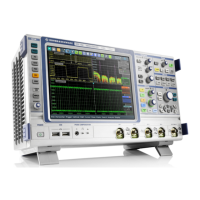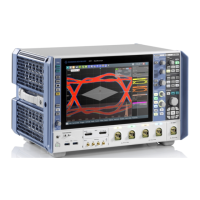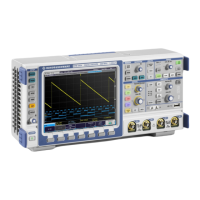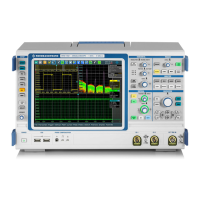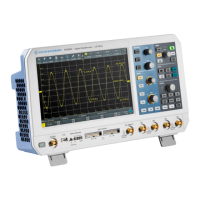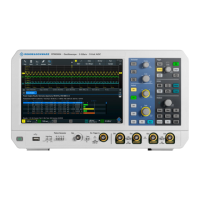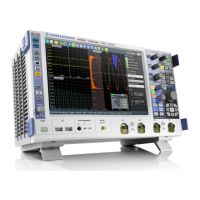Protocol analysis
R&S
®
RTP
543User Manual 1337.9952.02 ─ 12
Index min, Index max ← MOSI and MISO data conditions
The effect of data positioning depends on the Search mode. It sets the number of bits
or words before the first word of interest. These offset bits/words are skipped. If the
position operator defines a range, the first and the last bit/word of interest are defined.
The index 0 is associated with the first data bit or word.
Remote command:
TRIGger<m>:SPI:DPOSition on page 1592
TRIGger<m>:SPI:DPTO on page 1592
Search mode ← MOSI and MISO data conditions
Defines how the specified data pattern is searched:
"Word-aligned"
The pattern is matched only at word boundaries.
"Bit-aligned"
Bit-by-bit: the pattern can start at any position in the message.
Remote command:
TRIGger<m>:SPI:PALignment on page 1591
13.3.3.2 Triggering on SPI
Prerequisites: A bus is configured for the SPI signal to be analyzed.
1. Press the [Protocol] key and selet the "Shortcuts" tab.
2. Press "Setup trigger".
3. Select the serial bus that is set to SPI.
4. Select the "Trigger type".
5. For more complex trigger types, enter the data pattern conditions
For details, see Chapter 13.3.3, "SPI trigger", on page 541
13.3.4 SPI decode results
When the configuration of the serial bus is complete, the signal can be decoded:
1. In the "Protocol" dialog > "Setup" tab, enable "Decode".
2. In the "Protocol" dialog > "Display" tab, select additional result display settings:
"Show decode table" and "Show binary signals".
For a description of the display settings, see also Chapter 13.1.3, "Display",
on page 514.
The instrument captures and decodes the signal according to the standard definition
and the configuration settings.
The color-coding of the various protocol sections and errors simplifies the interpretation
of the visual display. The decode information condenses or expands, depending on the
horizontal scale. Various data formats are available to show the result values.
SPI bus (option R&S
RTP-K1)
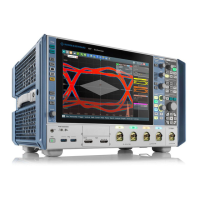
